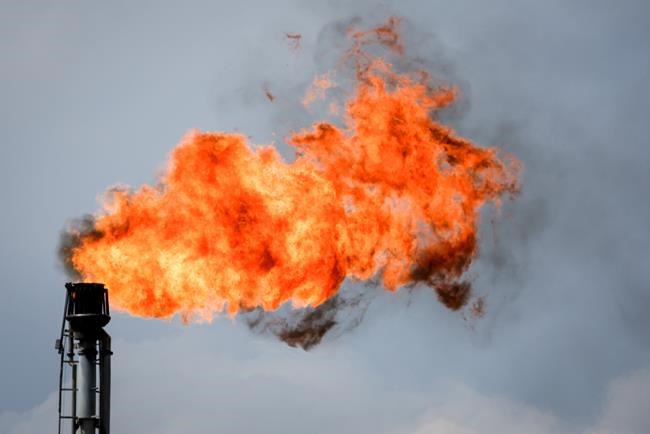
CALGARY — Canada’s oil and gas industry is warning that Ottawa’s emissions cap framework could result in significant production curtailments by companies and higher energy prices for consumers.
The plan to have the oil and gas sector cut its emissions by more than a third of 2019 levels by 2030 is meant to “set a limit on pollution, not production,” the federal government said in a news release announcing the framework Thursday.
But the Canadian Association of Petroleum Producers (CAPP), the country’s largest fossil fuel industry group, said the plan is a de facto production cap. While the industry is working to reduce its emissions, CAPP said the speed and scope of progress that the government is asking for is too ambitious.
“At a time when the country’s citizens are experiencing a substantial affordability crisis, coincident with record budget deficits, the federal government risks curtailing the energy Canadians rely on, along with jobs and government revenues the energy sector contributes to Canada,” the organization said in a news release.
The federal government’s long-promised emissions cap has been fought tooth-and-nail by this country’s fossil fuel sector ever since it was first proposed by the Liberals in the 2021 election.
The draft framework unveiled Thursday requires a smaller cut to emissions than was initially estimated in the government’s emissions reduction plan last year, and Environment Minister Steven Guilbeault said it was developed after extensive consultation with industry and other stakeholders to make sure it is achievable.
The emissions cap would take the form of a cap-and-trade system, giving companies some leeway if they can’t achieve the 35 to 38 per cent reduction targets. Emitters will be able to buy offset credits or contribute to a decarbonization fund that would lower that requirement to cutting just 20 to 23 per cent.
Oil and gas production accounts for more than one-quarter of Canada’s emissions and Guilbeault says capping their emissions is critical to meeting Canada’s climate targets.
But oil and gas companies feel it’s unfair to single out their sector, especially since Canada already has layers of carbon policy — in particular, a carbon-pricing system — which are designed to bring emissions down over time.
Many companies have already announced their own ambitious emissions-reduction plans, though they have been criticized by environmentalists for not moving fast enough on them.
The Pathways Alliance, for example, a consortium of Canada’s largest oilsands companies, says it has spent $1.8 billion since 2021 on decarbonization efforts. It has proposed spending $16.5 billion to build a massive carbon capture and storage network in northern Alberta.
Though it hasn’t yet made a final investment decision that would see the project move ahead, Pathways has said that project could help its member companies achieve 32 per cent emissions reduction below 2019 levels by 2030.
In a statement Thursday, Pathways Alliance president Kendall Dilling said the organization is still evaluating the emissions cap framework to determine how it may impact oilsands operations.
While Dilling said the group remains committed to building its large-scale carbon capture project, he added that imposing an emissions cap with additional regulatory complexity “does nothing to advance the certainty necessary for the planned multi-billion-dollar decarbonization projects to proceed.”
But Janetta McKenzie, acting director of oil and gas for clean energy think-tank the Pembina Institute, pointed out the targets laid out by the government Thursday are not that far off from the Pathways Alliance’s own stated targets.
She added that existing technologies like carbon capture and storage and methane abatement will go a long way to helping the industry get there.
“Given the technology solutions that the industry has, this is a realistic target on a realistic timeline,” McKenzie said.
“It’s not a business-as-usual target — it will require that industry take action and make investments to achieve this target. But that’s the purpose of it, to prompt investment in emissions reduction and finally begin to bend the curve on Canada’s highest emitting sector.”
The emissions cap framework comes as Canada’s oil and gas sector plans to boost its output to meet growing global demand for energy. A recent report by Deloitte Canada said Canadian oil production is expected to hit an all-time high within the next two years, as the coming startup of the Trans Mountain pipeline increases the industry’s export capacity.
— With files from Mia Rabson in Ottawa
This report by The Canadian Press was first published Dec. 7, 2023.
Amanda Stephenson, The Canadian Press
Share This:




